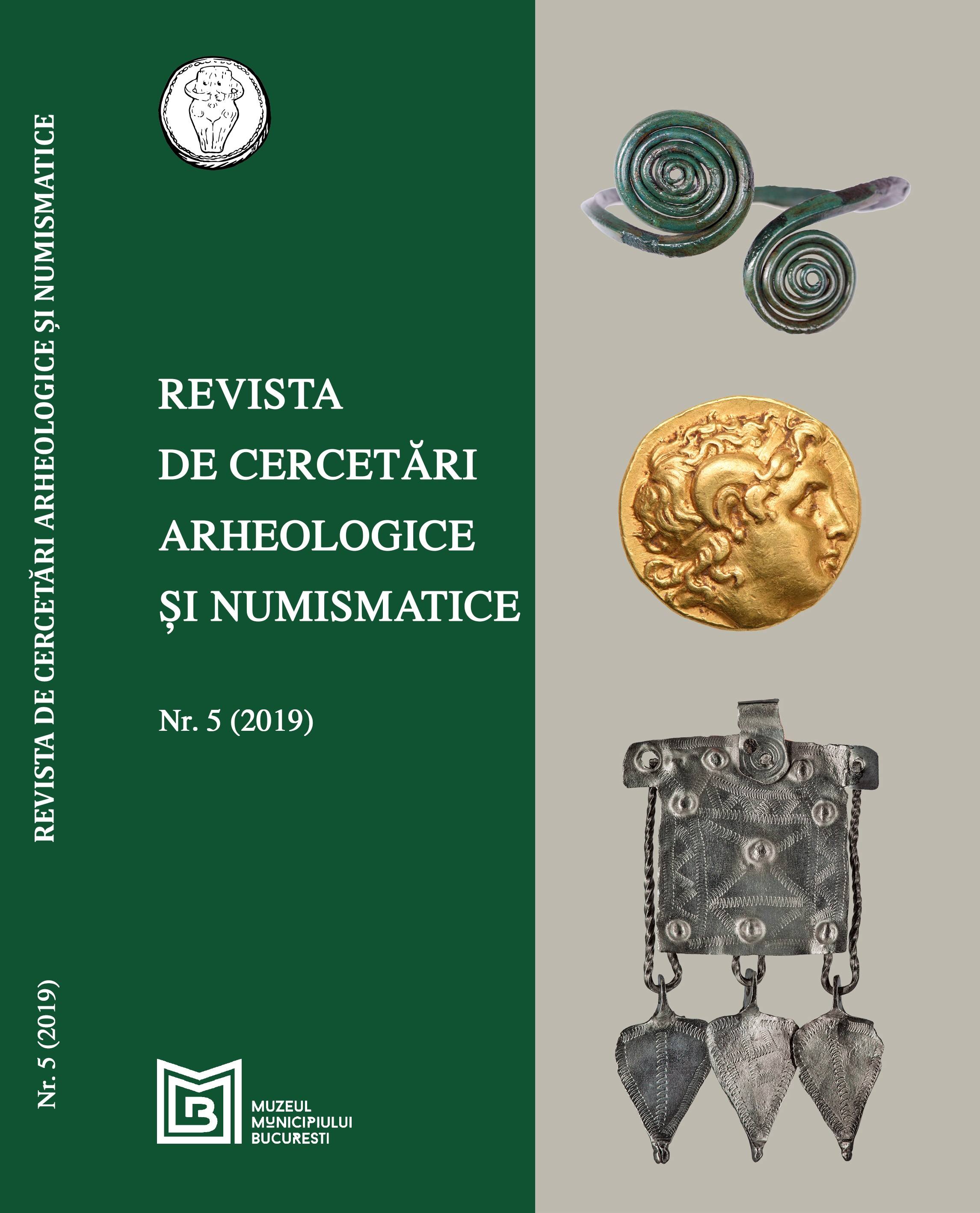Staterii de aur tip Lysimach din colecția ''Maria și dr. George Severeanu'', izvoare ale istoriei orașelor grecești pontice în secolele III-I a. Chr.
Lysimachus-type gold staters from the ''Maria and dr. George Severeanu'' Collection, historical sources of the Greek Pontic cities in the 3rd - 1st centuries BC
Author(s): Aurel Vîlcu, Alina PîrvulescuSubject(s): History, Economic history, Local History / Microhistory, Political history, Ancient World
Published by: Editura Muzeului Municipiului Bucuresti
Keywords: gold coins; staters of Lysimachus type; Byzantion; Istros; Tomis; Kallatis; the Maria and sr.George Severeanu collection;
Summary/Abstract: The authors publish 13 gold staters of Lysimachus type kept in the Maria and dr. George Severeanu collection. Three pieces belong to the posthumous issues of the 3rd – 2nd centuries BC, while 10 items were minted by the Pontic cities Istros, Tomis and Kallatis in the context of the Mithridatic wars. The earliest Lysimachus type stater, with ΔI, but without a trident on the reverse, was attributed to the city of Byzantion in c. 255-c. 245 BC, in the context of the wars between Ptolemaic Egypt and the Seleucid Empire. On the side of the Ptolemies, the city of Byzantion carried out an active policy in the Pontic area during the 3rd century BC, putting into circulation an important volume of gold staters. In the years 255-254 BC, the written sources mention two events that could lead to the minting of the staters with ΔI at Byzantion: the siege of the city by Antioch II and the war with Callatis. The second stater from the Maria and dr. George Severeanu collection, with a trident, # and the monogram on the reverse was issued by Byzantion in the years c. 175-150 BC.A posthumous stater of Lysimachus type (with TO, trident and AI on the reverse) minted at Tomis stands as proof of the ascension of this city in the second part of the 3rd century BC. Greek cities on the western coast of the Black Sea begin to mint staters of Lysimachus type following the model promoted by Byzantion. During this period, the importance of Tomis increases, which, at the beginning of the third Syrian war (246-241 BC), puts into circulation staters of Lysimachus type without trident on the reverse. Subsequently, Tomis struck staters of Lysimachus type with trident and AI on the reverse, probably for the purpose of hiring local mercenaries in the context of events happening in Thrace and Asia Minor in the years 230-c. 220 BC or later, towards the end of the 3rd century BC. Of the staters of Lysimachus type from the Maria and dr. George Severeanu collection, ten pieces are the latest issues put into circulation by Istros (1), Tomis (6) and Callatis (3). Regarding the Tomitan staters, it was found that two pieces with the ΘЄM were produced with the same obverse die and have a high gold content, 98.96% and 98.32%. Two other pieces, with the monogram, with the same obverse die, but different reverse dies, have a smaller title, 97.48% and 97.09%. The last two staters from Tomis, one with ΔIΟ on the reverse and the other with, have a gold content of 96.79% and 94.69%. A decrease in the title can also be seen in the case of the three Callatian staters, all with a trident in exergue, the monogram and the abbreviation KAΛ on the reverse. One stater (no. 10 in the catalog) has a better title, 97.01%, compared to the other two (nos. 11-12 in the catalog), which have a gold content of 95.99% and 95.72%. All the Callatian staters were minted with the same re-engraved obverse die. In the beginning, staters were produced such as piece no. 10 of the catalog, subsequently, the die was modified by adding a new element (a rosette or a star) visible in the case of the two staters nos. 11 and 12. As for dating, both the Callatian and Tomitan staters from the Maria and dr. George Severeanu collection were put into circulation in the 1st century BC, especially during the Mithridatic wars, but not later than the years 72/71. BC.The last item in the Maria and dr. George Severeanu collection is a stater struck by Istros, with a trident, IΣ and ΔI on the reverse. From a stylistic point of view, the coin seems to be authentic, but the weight is too high, 8.97 g, and shows a low gold content (87.79%), indicating rather a very well made fake. There are discussions on the two series of staters with ΔI on the reverse struck by Istros and which, based on an inscription, were assigned to Diogenes strategist and dated 91-89 BC and 89-86 BC respectively. Attention must be brought to the fact that the dating of the inscription is not certain and the episode described, the arrest of the Istrian embassy by Byzantion, could have taken place after the Second Mithridatic War (83-81 BC), but not later than 75 BC.
Journal: Revista de Cercetari Arheologice si Numismatice
- Issue Year: 5/2019
- Issue No: 5
- Page Range: 283-298
- Page Count: 16
- Language: Romanian

